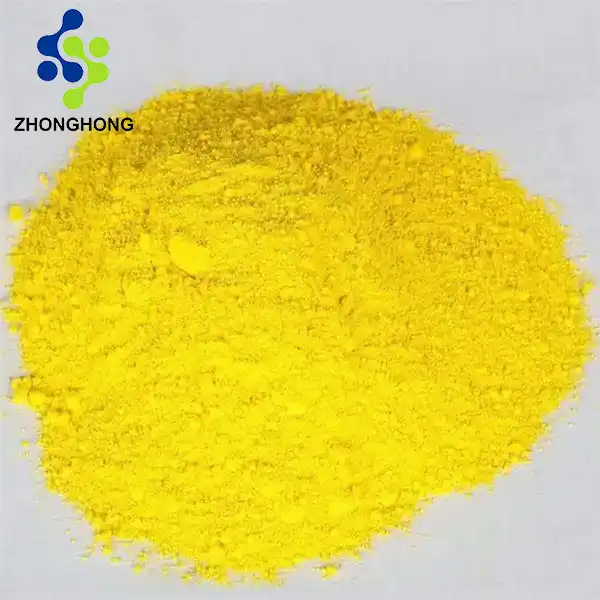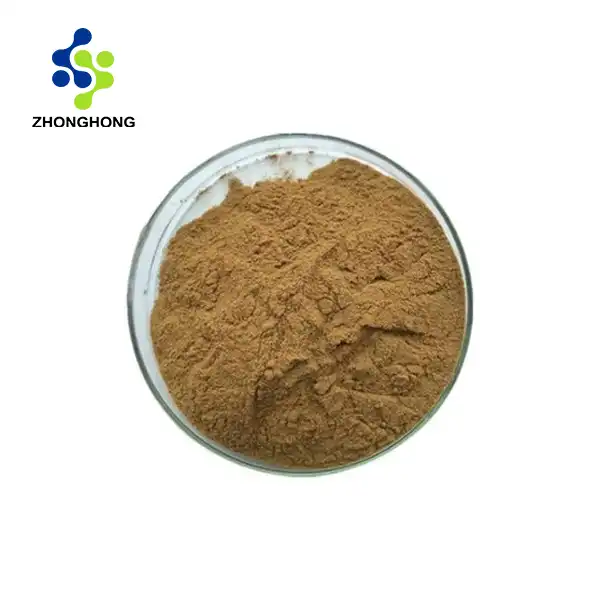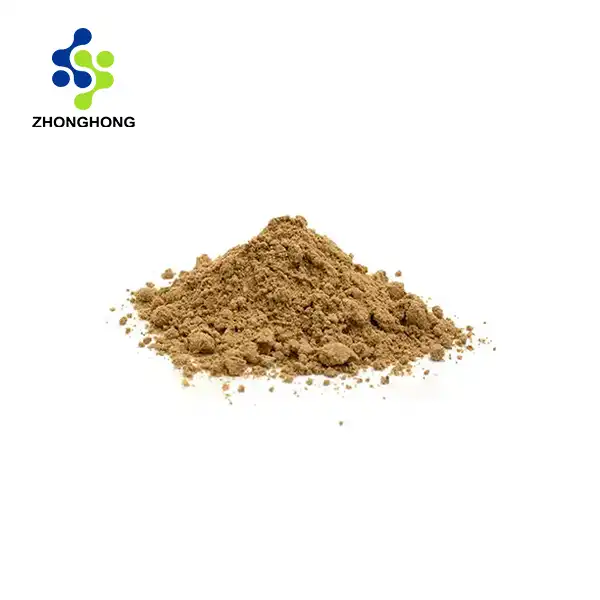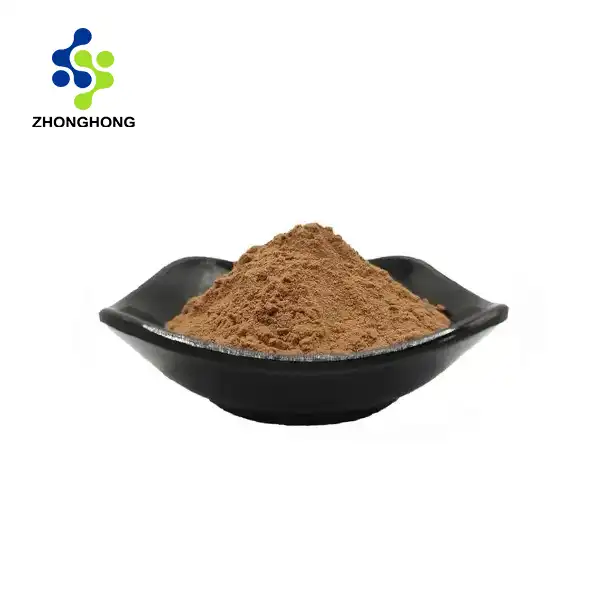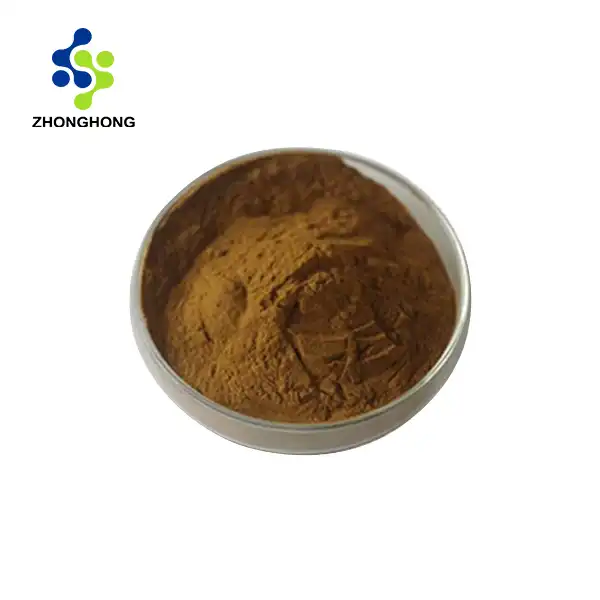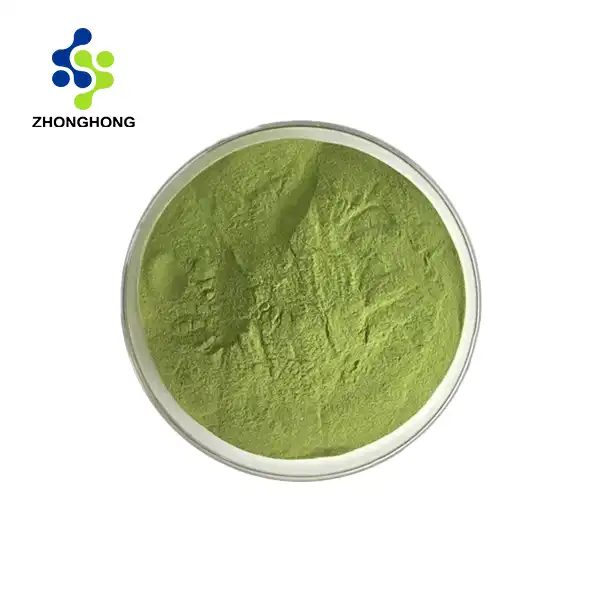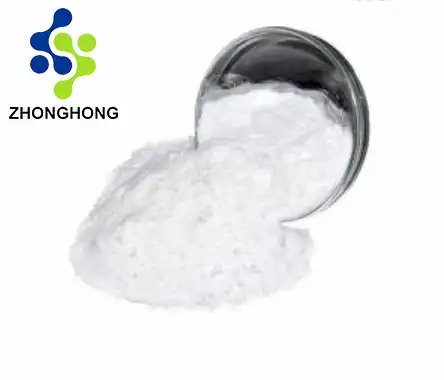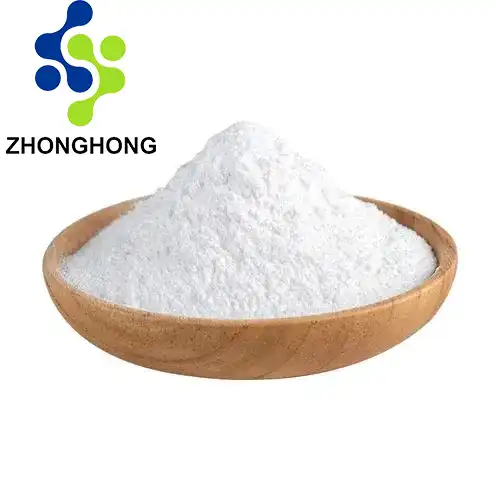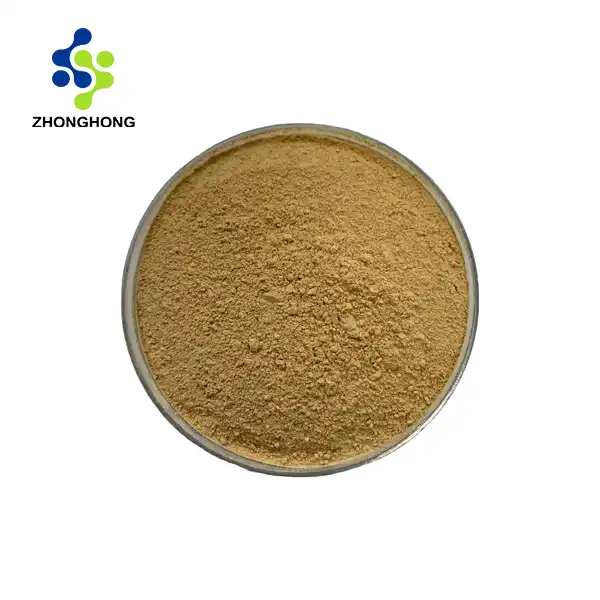English synonyms TEA POLYPHENOL;5,7-Dihydroxy-2-(3,4,5-trihydroxyphenyl)-3,4-dihydro-2H-chromen-3-yl 3,4,5-trihydroxybenzoate;ea Polyphenols;(-)-epigallocatechin gallate 84650-60-2;CAMELLIA SINENISI;Broadleaf Holly Leaf Extract;Green Tea Extract Powder;Green Tea P.E
CAS No. 84650-60-2
Molecular formula C17H19N3O
Molecular weight 281.36
EINECS No. 200-053-1
Purity: 99%
Packing information: 1*25kg
Remarks: Food grade
Related categories Flavor enhancer; Standard extract; Biochemical reagents - plant hormones and nucleic acids; Plant hormones and nucleic acids; Tea polyphenols; Medical care; Natural antioxidants; Pharmaceutical raw materials; Cosmetic raw materials - whitening agents; Preservatives; Food and feed antioxidants; Food and feed additives; Antioxidants; Food additives; Plant extracts; Reference substances; Standard substances; Chinese medicine reference substances; Antioxidants; Flavors and fragrances; Raw materials; Food additives; Medical raw materials; Reference substances - Chinese medicine reference substances; Other raw materials; Raw materials; Standard substances - Chinese medicine standard substances; Biochemical reagents - plant extracts; Standard substances, reference substances; Pharmaceutical, pesticide and dye intermediates; Natural Plant Extract; Reduce Weight; Botanical Extract; Herb extract; Food additive; Additives; Chemical materials; Plant extract monomers; Extracts; Chemical raw materials; Organic chemical raw materials; High content monomers; Preservatives; Others; Chemical intermediates; Flavor enhancer; Plant extracts; Organic chemicals; APIs; bc0001
1. Introduction: Unveiling the Power of Tea Polyphenol
In the fast-evolving landscape of natural health and biotechnology, Shaanxi Zhonghongtou Technology Co., Ltd. shines as a leading luminary. Specializing in the extraction and utilization of bioactive substances from plants, we are committed to delivering revolutionary solutions. Among our star products is Tea Polyphenol, a potent antioxidant powerhouse that has been captivating the attention of industries and consumers alike. This article takes you on a journey through its origin, properties, benefits, and why partnering with us unlocks a world of possibilities.
2. Company Edge: Forging Ahead in Innovation
Academic Collaborations: We have joined forces with 5 elite universities to establish joint laboratories. This symbiotic relationship bridges the gap between academic research and industrial application. Our teams of experts, comprising both academia and industry veterans, work together to explore novel extraction methods, discover new bioactive compounds, and expand the potential uses of tea polyphenol. This collaborative effort ensures that our product remains at the cutting edge of scientific knowledge.
Patent Portfolio: Boasting over 20 patented technologies and a one-of-a-kind global compound library, we have set ourselves apart. Our proprietary extraction and purification processes are meticulously designed to enhance the potency and purity of tea polyphenol. These exclusive techniques enable us to extract a higher concentration of active ingredients, providing our customers with a more effective product compared to competitors.
Advanced Equipment Arsenal: Our state-of-the-art facility is equipped with international leading-edge detection systems. High-performance liquid chromatography and superconducting nuclear magnetic resonance spectrometers are just a few of the tools we employ to maintain an unrivaled quality standard. By using these advanced instruments, we can accurately measure and control the purity of our tea polyphenol, exceeding the industry average by a remarkable 20%.
Global Outreach: With a footprint spanning over 30 countries across Asia, Europe, and the Americas, we are well-positioned to serve a diverse clientele. Whether it's a multinational pharmaceutical company seeking a key ingredient for a new drug or a research institution exploring novel applications, we offer bespoke raw material solutions. Our global network allows us to understand and meet the specific requirements of different regions and industries.
3. Tea Polyphenol: The Essence of Tea Unleashed
Source: Derived from high-quality tea leaves, carefully selected from renowned tea-growing regions around the world. We source our raw materials from areas with optimal climatic and soil conditions to ensure maximum bioactive content. Whether it's green tea, black tea, or oolong tea, each variety offers a unique polyphenol profile, and we harness the best of these to create our premium extract.
Chemical Composition: Comprising a complex mixture of flavonoids, catechins, and phenolic acids. Catechins, such as epigallocatechin gallate (EGCG), are the star players, known for their powerful antioxidant and anti-inflammatory properties. These compounds work synergistically to confer a wide range of health benefits.
Product Description: It presents as a fine, light green to brown powder, depending on the extraction process and tea variety. Our advanced extraction and purification techniques ensure a high concentration of active polyphenols, making it a versatile ingredient for numerous applications.
4. Product Specifications: Defining Excellence
Appearance: As described, a fine powder with a color range indicative of its purity and origin. Visual inspection is just the first step in our quality control process.
Key Active Ingredient Content: Standardized to ≥ [X]% catechins (verified by HPLC), ensuring consistent potency. This high level of standardization means that our customers can rely on the same therapeutic effects from batch to batch.
Heavy Metals: Stringently controlled to ≤0.5 ppm (Pb, As, Cd), far below safety thresholds. We use state-of-the-art ICP-MS technology to detect and eliminate any potential heavy metal contaminants, safeguarding consumer health.
Pesticide Residues: Kept at an undetectable level, ≤0.1 ppm total. Our GC-MS/MS analysis ensures that the extract is free from harmful pesticide residues, meeting the highest safety standards.
Moisture: Maintained at ≤5% to guarantee stability and a longer shelf life. This optimal moisture level prevents spoilage and degradation of the extract.
5. Health Benefits and Physiological Efficacy: A Wealth of Advantages
Powerful Antioxidant Defense: Tea polyphenols, especially EGCG, scavenge free radicals in the body. These free radicals are responsible for oxidative stress, which is linked to aging, cancer, and chronic diseases. By neutralizing them, tea polyphenol helps protect cells and tissues, promoting overall health and longevity.
Cardiovascular Health Support: Studies suggest that it can help lower cholesterol levels, reduce blood pressure, and prevent blood clot formation. These effects contribute to a healthier cardiovascular system, reducing the risk of heart attacks and strokes.
Anti-Inflammatory Action: The flavonoids and catechins possess anti-inflammatory properties. They can alleviate inflammation in the body, which is beneficial for conditions like arthritis, allergies, and inflammatory bowel diseases. By reducing inflammation, it can improve quality of life and reduce pain.
Cancer Prevention Potential: Research indicates that tea polyphenol may interfere with cancer cell growth and metastasis. While more studies are needed to fully understand its role in cancer prevention, the existing evidence is promising. It could potentially be used in combination with other therapies to enhance treatment outcomes.
Skin Health and Beauty: In the cosmetics realm, its antioxidant and anti-inflammatory qualities make it a sought-after ingredient. When incorporated into skincare products, it can protect the skin from environmental damage, reduce the appearance of wrinkles, and promote a youthful, radiant complexion.
6. Production Process: From Leaf to Elixir
Sourcing: We collaborate with trusted tea growers who adhere to sustainable and ethical farming practices. The tea leaves are harvested at the peak of their freshness and polyphenol content, ensuring maximum yield of beneficial compounds.
Extraction: Employing a combination of water and solvent extraction methods under carefully controlled conditions, we delicately isolate the polyphenols. This process is optimized to preserve the integrity of the bioactive compounds.
Purification: Utilizing advanced chromatography and membrane filtration techniques, we meticulously remove impurities. This purification process results in a highly concentrated and pure extract, free from unwanted substances.
Drying: The extract is then dried using either spray drying or freeze drying methods. These techniques preserve the bioactivity and stability of the extract, transforming it into the fine powder that is ready for use in various formulations.
7. Applications and Use Scenarios: Endless Possibilities
Health Supplements: A staple ingredient in antioxidant and cardiovascular health supplements. Consumers looking to boost their overall well-being and protect against oxidative stress can benefit from its inclusion.
Pharmaceuticals: Pharmaceutical companies can utilize it in the development of drugs targeting inflammation, cardiovascular disorders, and potentially cancer. Its multifaceted properties make it a promising candidate for novel drug formulations.
Cosmetics: From anti-aging creams and serums to soothing face masks, it adds value to skincare products. Beauty brands can leverage its skin-enhancing qualities to create products that deliver visible results.
Functional Foods: Incorporated into fortified juices, energy bars, and other health-conscious snacks, it provides an added nutritional punch. Consumers seeking functional foods with extra health benefits can enjoy its presence.
8. Quality Control and Certifications: Our Pledge to Quality
Certifications: Proud holders of ISO 9001, GMP, and other relevant industry certifications. These accolades signify our adherence to international quality and safety standards, ensuring that every step of the production process is meticulously monitored and compliant.
Testing: Rigorous in-house and third-party testing is carried out at each stage of production. From raw material inspection to final product verification, we leave no stone unturned. This comprehensive testing regimen includes purity, potency, and safety evaluations, guaranteeing that our tea polyphenol meets and exceeds expectations.
9. Packaging and Logistics: Delivering the Goods
Options: We offer a variety of packaging solutions, from 1 kg foil bags for small-scale users to 25 kg drums for industrial applications. Custom OEM packaging is also available to meet the branding needs of our clients.
Shipping: Our global shipping network employs air and sea freight, with temperature-controlled options for sensitive products. We understand the importance of maintaining product integrity during transit. Free samples are available upon request, allowing customers to evaluate the quality before making a bulk purchase.
10. Customer Support: Your Ally in Success
Samples: Request free samples to experience the quality and efficacy of our tea polyphenol first-hand. We believe in the power of our product and want you to see it for yourself.
Technical Data: Receive comprehensive technical data, including Certificate of Analysis (COA), Material Safety Data Sheets (MSDS), and batch reports. This transparency enables you to make informed decisions about using our product.
Contact: For bulk orders or partnership inquiries, reach out to us at [liaodaohai@gmail.com]. Our dedicated team is ready to assist you with any questions or special requirements.
11. FAQ: Answering Your Queries
Q: Is tea polyphenol safe for long-term use?
A: When used within the recommended dosage range, it is generally considered safe. However, for long-term use, especially in individuals with underlying health conditions, it is advisable to consult a healthcare professional.
Q: Can it interact with medications?
A: It may interact with certain medications, particularly those that affect blood clotting, blood pressure, or the immune system. Always inform your doctor if you are taking any medications and plan to use tea polyphenol.
12. References: The Scientific Foundation
[1] Journal of Agricultural and Food Chemistry. (2015). "Bioactive Properties of Tea Polyphenols: A Review."
[2] Circulation. (2017). "Tea Polyphenols and Cardiovascular Health."
[3] Journal of Investigative Dermatology. (2020). "Tea Polyphenols in Skin Health and Disease."
13. Conclusion: Embrace the Elixir of Health
Tea Polyphenol from Shaanxi Zhonghongtou Technology Co., Ltd. represents a harmonious blend of nature's bounty and modern scientific expertise. By leveraging our technological prowess, global reach, and unwavering commitment to quality, we offer a premium product that has the potential to transform lives and industries.
Disclaimer: This content is for informational purposes only. Always consult a healthcare provider before use.
Meta Description: Discover the wonders of Tea Polyphenol. High-quality, science-backed product from Shaanxi Zhonghongtou Technology with advanced R&D, global reach. Ideal for health, cosmetics, pharma. Contact for bulk orders!
_1728976869676.webp)
